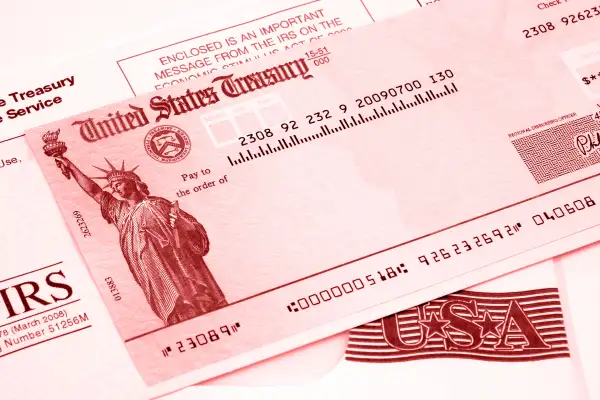What to Do if You Haven't Received Your Second Stimulus Check Yet

After much political back and forth—and about nine months after the first checks started going out—the second round of stimulus checks is finally hitting Americans' bank accounts.
Many people have tweeted that they’ve already received the second payment. But there are also lots of people concerned about why they haven’t.
This time, the checks are up to $600 per person, half as much as the first payments were. Here’s what to do if you haven’t received your second stimulus check yet:
Keep an eye on your bank account and mail
Treasury Secretary Steve Mnuchin said last week that direct deposit payments would continue into this week. The official payment date for those direct deposit payments is Jan. 4, according to the IRS.
If you received your first stimulus payment via direct deposit, that is likely how you’ll receive the second—but it isn’t a guarantee. If the information the IRS has on file for you has changed, for example, you can probably expect a mailed payment this time around (more on that later). In general, the IRS and Treasury urge those who don’t get their payment via direct deposit by early January to watch their mail carefully—even if you think you should have gotten your payment by direct deposit.
If you’re expecting your payment in the mail—which will come in the form of a check or debit card—you’ll likely have to wait a bit longer to receive it. The cutoff date for the IRS to issue payments is Jan. 15, according to the text of the most recent coronavirus relief package. Last week, the IRS said that paper checks would start to be mailed on Dec. 30, but that deadline indicates that yours might not be in the mail until mid-January. (Make sure you know what to look for—if you receive a debit card, it will be in a white envelope that prominently displays the Treasury’s seal, and has the Visa name on the front of the card and the issuing bank, MetaBank, on the back, according to the IRS.)
You can also use the Get My Payment tool to track stimulus payments. The tool will tell you if your payment was sent, and in what form (direct deposit or mail). If it says “Payment Status Not Available,” you were either not eligible, or the IRS wasn’t able to issue the second payment, so you’ll need to claim it when you file your taxes. (The system showed signs of being overwhelmed on Monday, so you might need to keep trying to get your answer.)
Make sure correct information is on file
If you got your first stimulus payment by direct deposit, the IRS will be using that same bank account information to issue you the second one. You can't change your payment information, according to the IRS. That means that if your bank information has changed at all—say you had to close that account and open a new one—the bank will return that deposit and the IRS will mail you a check. That means, again, keep an eye on your mail.
For mailed payments, the IRS will generally use the address on your most recent tax return. If that’s changed, you need to notify the IRS, which you can do on the phone, in a letter or via Form 8822. Make sure to also let the United States Postal Service (USPS) know of your address change, so the check will be forwarded to your new address if it goes to your old one. If the IRS gets your payment back because it couldn’t be delivered by the postal service, it will hold the payment until it receives the updated address (the status of the payment on the Get My Payment tool will be “Needs More Information”).
Request a Payment Trace
After you receive your stimulus payment, you should also get a notice from the IRS in the mail which says the amount you were paid. If you receive this notice, but haven’t gotten your stimulus payment, it’s possible that it was lost or stolen.
In this case, you can start a trace by contacting the IRS. If the check wasn’t cashed, you’ll receive a replacement, and if it was cashed, you will have to file a claim with the Bureau of the Fiscal Service (BFS)—you’ll receive instructions on how to do this. Keep in mind that you need to wait until a certain amount of time has passed to start a trace, like four weeks if the payment was mailed, or six weeks if it was mailed but you have a forwarding address on file with your post office.
Prepare to claim your payment when you file your taxes
If you’ve done all this and are certain you’re eligible for a stimulus check, but still don’t receive one, you can claim the amount you should have received when you file your taxes later this year. The Recovery Rebate Credit will either increase the amount of your tax refund or lower the amount of the tax you owe, according to the IRS.
You can also use this credit if you received a payment, but it wasn’t the full amount.
What should you do if you haven’t gotten your first check?
While many are searching for evidence of their second stimulus checks, some people haven’t even received their first. The IRS continued to make these payments until Dec. 31, 2020, but if you still don’t receive one, or don’t receive the full amount, you’ll want to claim it via the Recovery Rebate Credit when you file your 2020 taxes.
More from Money:
Here's When You'll Get Your Second Stimulus Check
New Unemployment Benefits: Who Qualifies and When Payments Start
